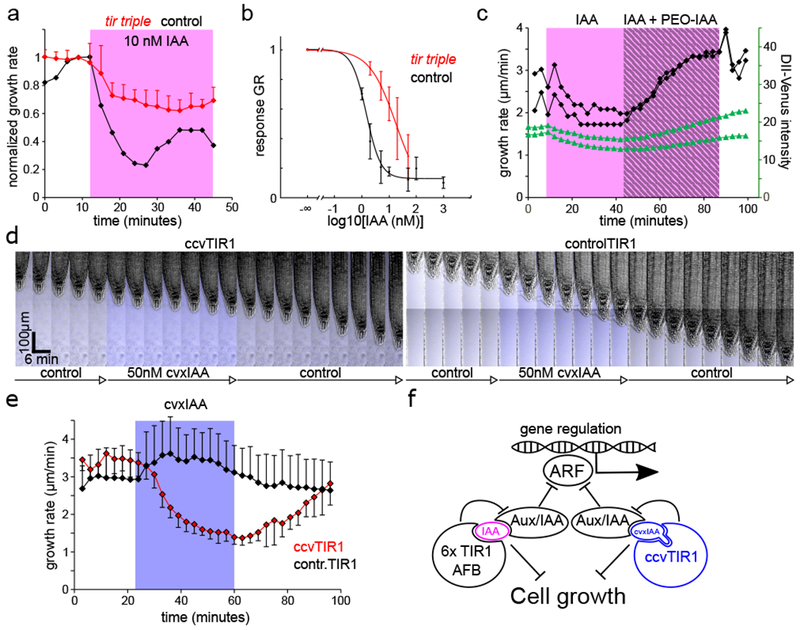Fig.4.

The root growth inhibition requires the TIR1/AFB-Aux/IAA auxin co-receptor. (A). tir triple mutant shows a defect in the response to 10nM IAA; compare to Fig.1 D, F. Mean normalized growth rate, 5 and 2 roots for tir triple and control, +SD. (B). The dose response of the tir triple mutant is shifted towards higher IAA concentrations: IC50=17.8nM (control is the same as in Fig.1E). Data points are means of N= 4,5,4,8,9 roots for [IAA]ext =2,5,10,20,50nM respectively ±SD. (C). Addition of PEO-IAA results in a rapid reversion of the growth inhibition and an increase in the DII-Venus marker intensity. IAA 1nM is shaded in magenta, addition of PEO-IAA (10µM) is marked by gray stripes. DII-Venus intensity (green) was measured in the lateral root cap cells. Growth rates and DII-Venus intensities of two independent roots are shown. (D). cvxIAA causes root growth inhibition only in the synthetic ccvTIR1 line. Addition of cvxIAA (50nM) is marked by the tracer fluorescence in blue. (E). Quantification of the ccvTIR1 (red) and controlTIR1 (black) roots to 50nM cvxIAA (blue). Means of 5 roots for each genotype, ±SD. (F). The formation of the TIR1/AFB-auxin-Aux/IAA complex negatively regulates root growth, likely by a signaling branch that is distinct form the transcriptional regulation function. The synthetic ccvTIR1 receptor and the cvxIAA ligand are shown in blue.
